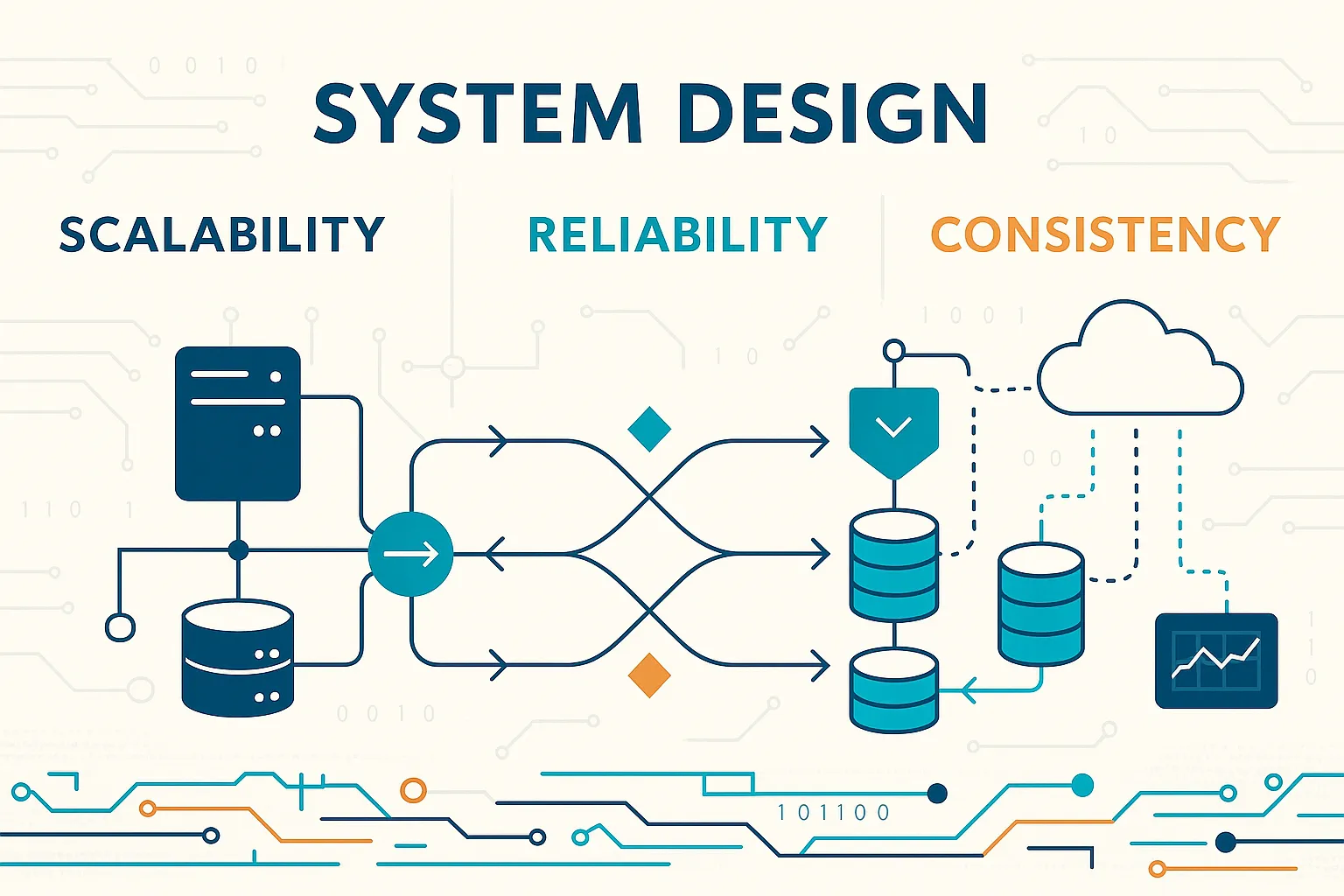System Design Fundamentals: What Every Developer Must Know

System Design Fundamentals: What Every Developer Must Know
Day 1 of the 30-Day System Design Roadmap
Three years ago, I thought system design was just about drawing boxes and arrows on a whiteboard during interviews. I couldn't have been more wrong. System design is the difference between an application that works for 100 users and one that serves millions without breaking a sweat.
Today, we're starting a journey that will transform how you think about building software. Whether you're debugging a slow API or architecting your first microservice, understanding these fundamentals will change everything.
What is System Design, Really?
System design isn't just about technical components—it's about solving human problems at scale. It's the art and science of building software systems that can handle real-world demands while remaining maintainable, reliable, and cost-effective.
Think of it this way: if coding is like building a house, system design is like city planning. You're not just concerned with individual buildings (components) but with how they work together, how people move between them, and how the entire infrastructure scales as the population grows.
The "Aha!" Moment
Most developers have their system design awakening when they first encounter these scenarios:
- The Traffic Spike: Your perfectly working app crashes when featured on social media
Sound familiar? These aren't coding problems—they're system design problems.
The Three Pillars of System Design
Every great system is built on three fundamental pillars. Understanding these will give you the mental framework to approach any design challenge.
1. Scalability: Growing Without Breaking
Scalability is your system's ability to handle increased load gracefully. But here's what most people get wrong: scalability isn't just about handling more users.
There are actually three types of scalability:
User Scalability: Can your system handle more concurrent users?
Data Scalability: Can your system handle more data?
Feature Scalability: Can your system accommodate new features?
2. Reliability: Building Systems That Don't Fail
Reliability means your system continues to work correctly even when things go wrong. And trust me, things will go wrong.
Hardware fails. Networks hiccup. Dependencies go down. The question isn't whether failures will happen—it's how your system responds when they do.
Reliable systems are built with these principles:
Fault Tolerance: The system continues operating when components fail
Error Handling: The system handles unexpected inputs and situations
Monitoring and Observability: You know what's happening in your system
3. Consistency: Managing Data Across Distributed Systems
Consistency is about ensuring that all parts of your system agree on the current state of data. This becomes crucial when you have multiple databases, caches, or services.
Imagine an e-commerce site where:
This is a consistency problem, and it's more common than you think.
The Fundamental Trade-offs
Here's where system design gets interesting (and challenging): you can't optimize for everything simultaneously. Every design decision involves trade-offs.
Performance vs. Consistency
High Performance often means:
Strong Consistency often means:
Scalability vs. Simplicity
Highly Scalable systems often require:
Simple systems are:
Cost vs. Performance
High Performance usually means:
Cost Efficiency might require:
Real-World Example: A Simple Web Application
Let's apply these concepts to something concrete. Imagine you're building a blog platform (like Medium or Dev.to).
Version 1: The Simple Start
- Architecture: Single server with database
Version 2: Growing Pains
- Problem: Page load times increase as content grows
Version 3: Traffic Spike
- Problem: Server crashes during viral article
Version 4: Global Audience
- Problem: Users in different continents experience slow loading
Each evolution represents different priorities and trade-offs based on real user needs.
Why This Matters for Every Developer
You might think, "I'm just building CRUD apps, do I really need to know this?" The answer is absolutely yes, and here's why:
1. Better Code Design
Understanding system design principles makes you write better code at every level:
2. Debugging Superpowers
When things go wrong (and they will), system design knowledge helps you:
3. Career Growth
System design skills are increasingly important for:
4. Product Thinking
You'll start thinking like a product engineer:
Common Misconceptions
Before we dive deeper in this series, let's clear up some common misconceptions:
Myth: "System design is only for big tech companies" Reality: Every application that serves real users faces system design challenges
Myth: "You need to know every technology to do system design" Reality: System design is about principles and trade-offs, not memorizing tools
Myth: "Good system design means using the latest technologies" Reality: Good system design means choosing the right tool for the job
Myth: "System design is just about scalability" Reality: It's about building reliable, maintainable systems that solve real problems
Key Takeaways
1. System design is about solving human problems at scale, not just drawing diagrams 2. Every design decision involves trade-offs—there's no perfect solution 3. The three pillars are scalability, reliability, and consistency—understand how they interact 4. Start simple and evolve based on real requirements, not hypothetical ones 5. Focus on principles over tools—technologies change, but principles endure
Your System Design Journey Starts Now
System design might seem overwhelming at first, but remember: every expert was once a beginner. The key is to start thinking about these concepts in everything you build.
Tomorrow, we'll dive deeper into the relationship between scalability and performance, and why understanding this difference is crucial for making the right architectural decisions.
Ready to transform how you think about building software? Let's continue this journey together.